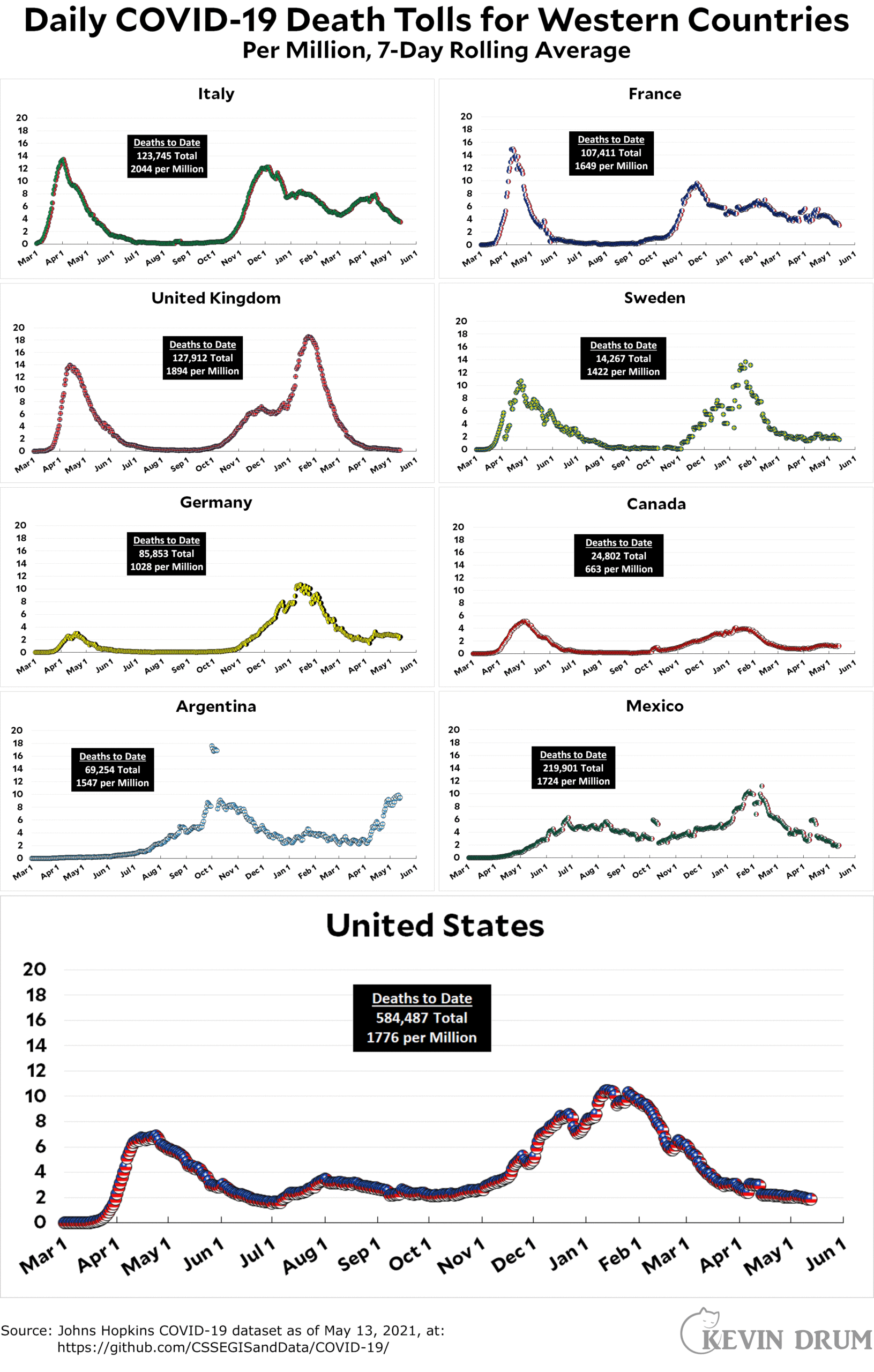Here’s the officially reported coronavirus death toll through May 15. The raw data from Johns Hopkins is here.
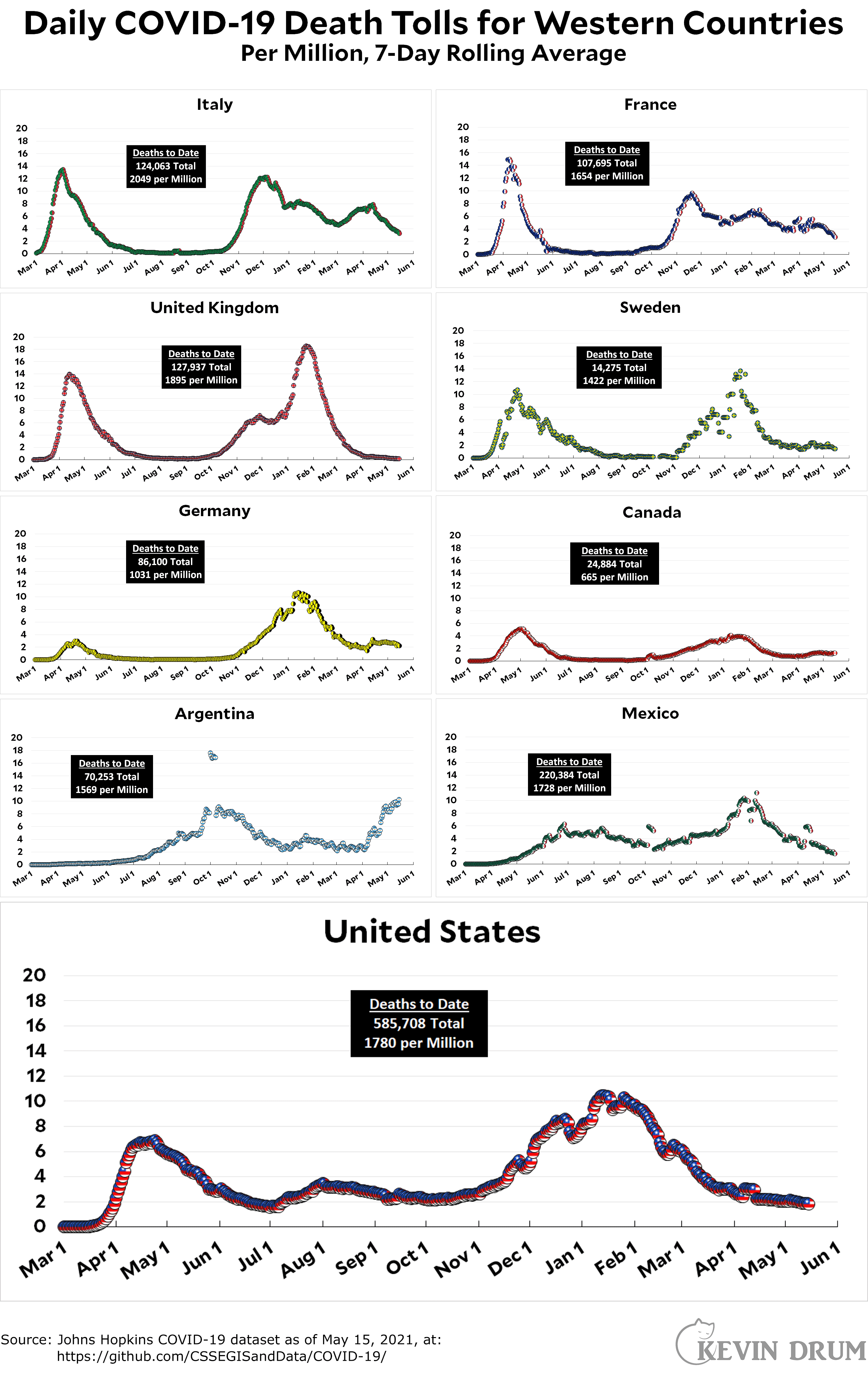
Cats, charts, and politics

Here’s the officially reported coronavirus death toll through May 15. The raw data from Johns Hopkins is here.

The American public continued to spend, spend, spend in April:
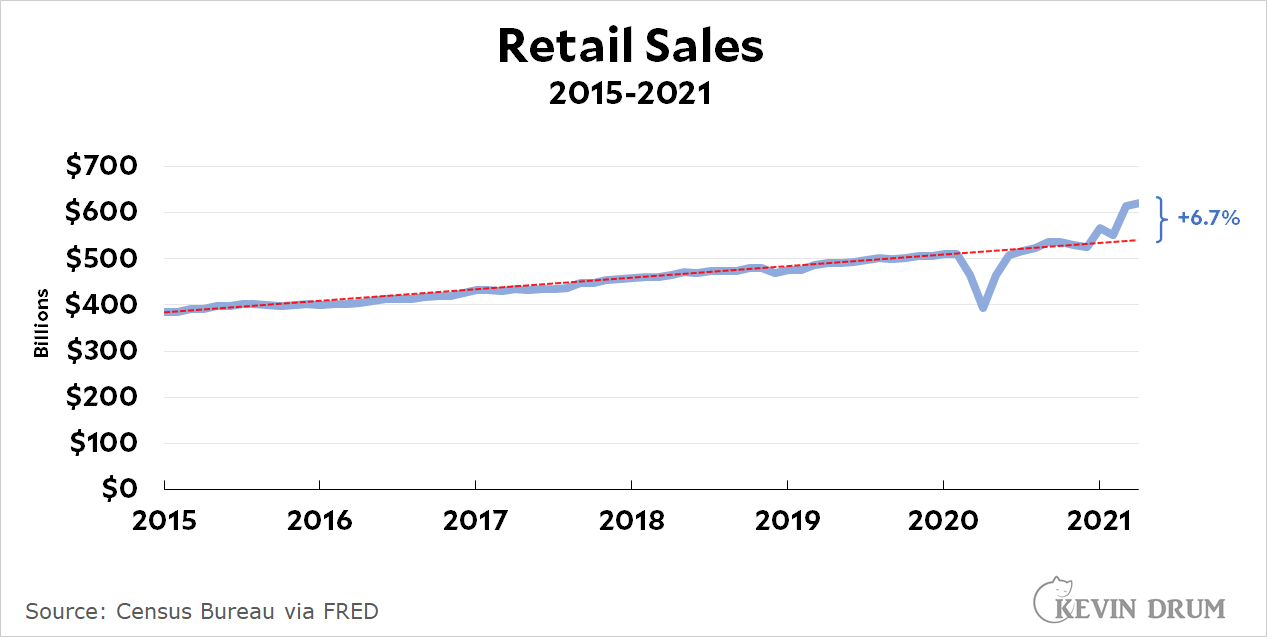 In March retail spending shot up well above the trendline of the past few years, and in April it stayed there. This is not yet enough to make up for the 3-month plunge last year, but it's getting there.
In March retail spending shot up well above the trendline of the past few years, and in April it stayed there. This is not yet enough to make up for the 3-month plunge last year, but it's getting there.
Unsurprisingly, we're all getting offline and starting to do more of our shopping out in the real world:
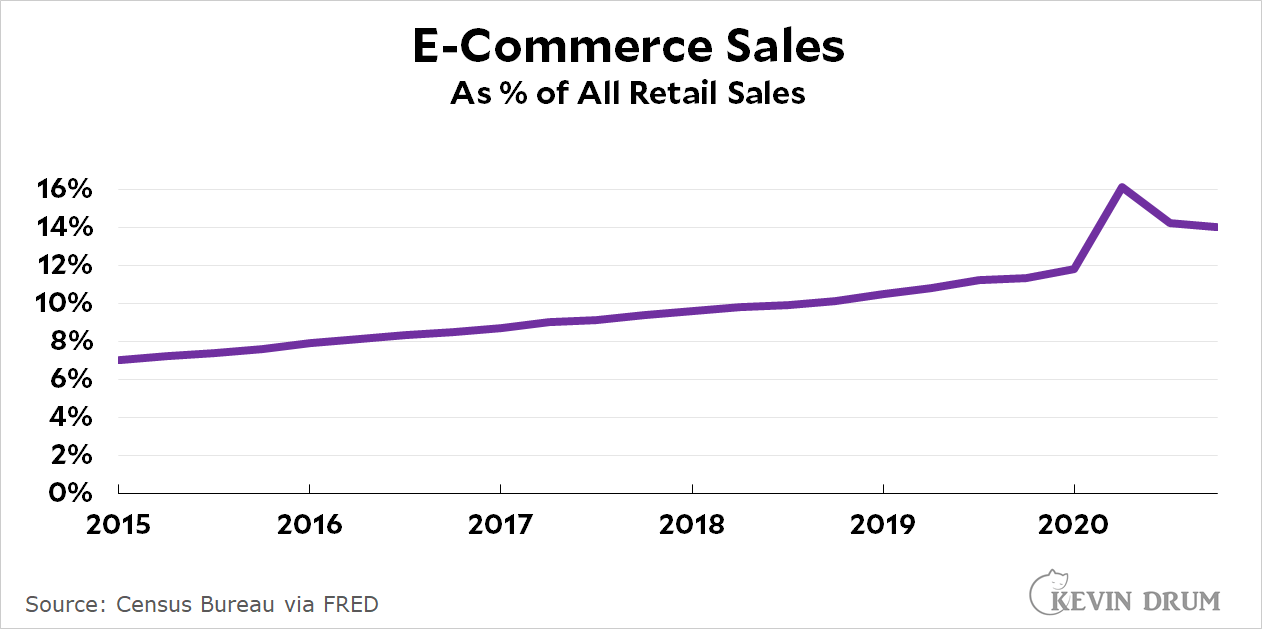
This only goes through the end of 2020, and I wouldn't be surprised if we're back on trend by the middle of this year.
While I was looking up these numbers, I got curious about spending at the start of the pandemic. There was a huge downward spike starting in mid-March, but different products went down more than others:
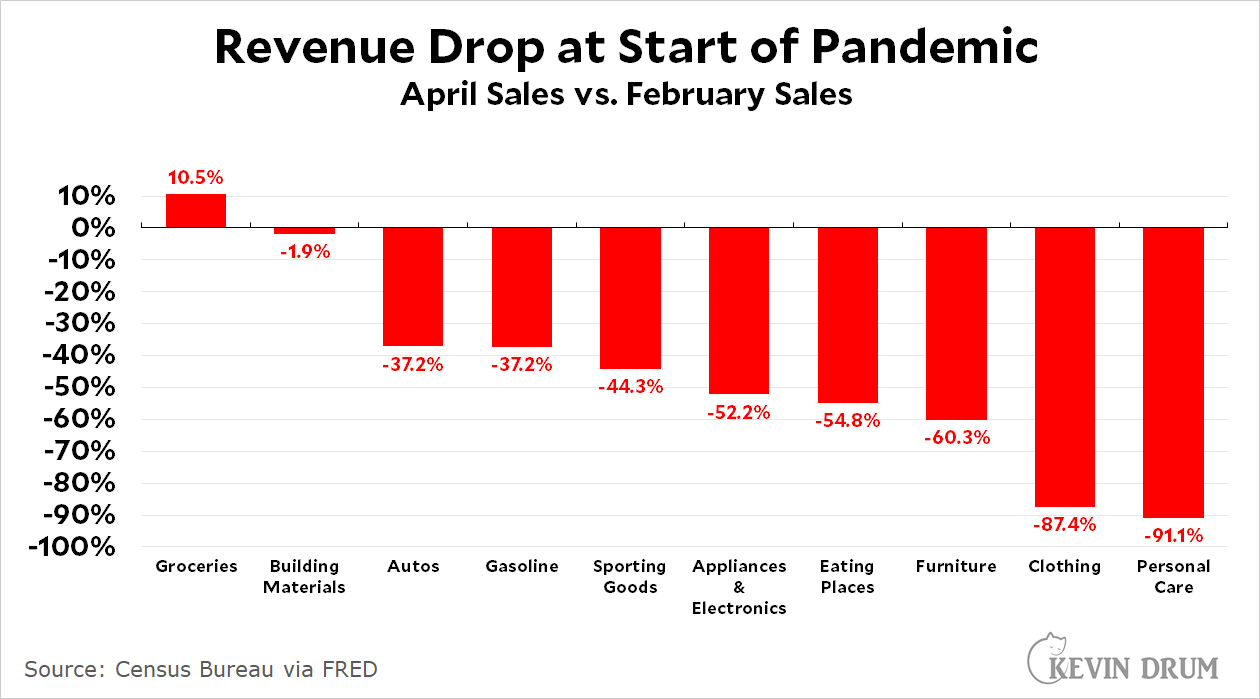
Grocery spending actually went up, which is no surprise since (a) everyone has to eat, and (b) all the restaurants were closed. Beyond that, I'm a little hard pressed to tell any kind of unified story about these numbers, though it sure looks like once the pandemic became official we all decided almost immediately that we didn't care how we looked anymore, which would explain the massive drop in spending on clothes and personal care.
Can you make up a story that explains all this? If so, you can join the pundit narrative hall of fame. For this assignment, pretend you're David Brooks.
A few days ago the CDC changed its official guidance about COVID-19, finally acknowledging that one of the primary transmission routes for the virus is via airborne aerosols. This prompted a lot of criticism about the CDC being extraordinarily late to admit this.
There's a lot I could say about this, but I won't for now. I just want to ask one question: Why does anyone care? The CDC's official guidance may have been slow to change, but as early as last May they were publishing research that acknowledged the possibility of airborne transmission. In August they formed a task force to investigate transmission modes. By September Dr. Fauci was publicly conceding that COVID transmission was "much more aerosol than we thought." In October the CDC's official guidance acknowledged the existence of airborne transmission. Super-spreader events (which are indicative of airborne transmission) had already been in the regulatory eye for months. And very early on the CDC was recommending better ventilation to rein in virus transmission, which mostly matters only if the virus is airborne.
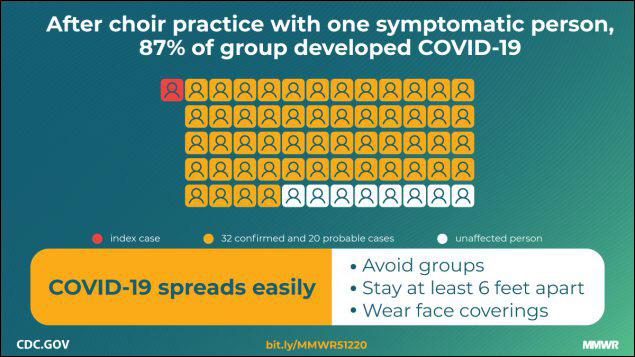
So we were already focused on super-spreader events and the CDC was recommending better ventilation. What would have been different if the CDC had acknowledged the aerosol infection route earlier? A little less obsessive surface cleaning? (Though the CDC always said that surface transmission was rare.) Social distancing at ten feet instead of six?
I'm not sure, but this is a genuine question. I know that hospitals fought against acknowledging airborne transmission because it would have required them to adopt protective gear that was both more expensive and more cumbersome. An official change in CDC guidance would have had a big impact on them. Beyond that, though, I'm a little hard put to figure out what would have changed outside the hospital world if the CDC had been quicker on the ball. As Fauci said in October,"Rather than getting bent out of shape of, what's the evidence of 5%, 10%, 20%—aerosol transmission almost certainly occurs, then act like it's occurring. And then do the same thing you've been doing otherwise."
So: was the public response to COVID-19 really hindered much by the CDC's sluggish official guidance? Can anyone help me out here?
Here’s the officially reported coronavirus death toll through May 14. The raw data from Johns Hopkins is here.
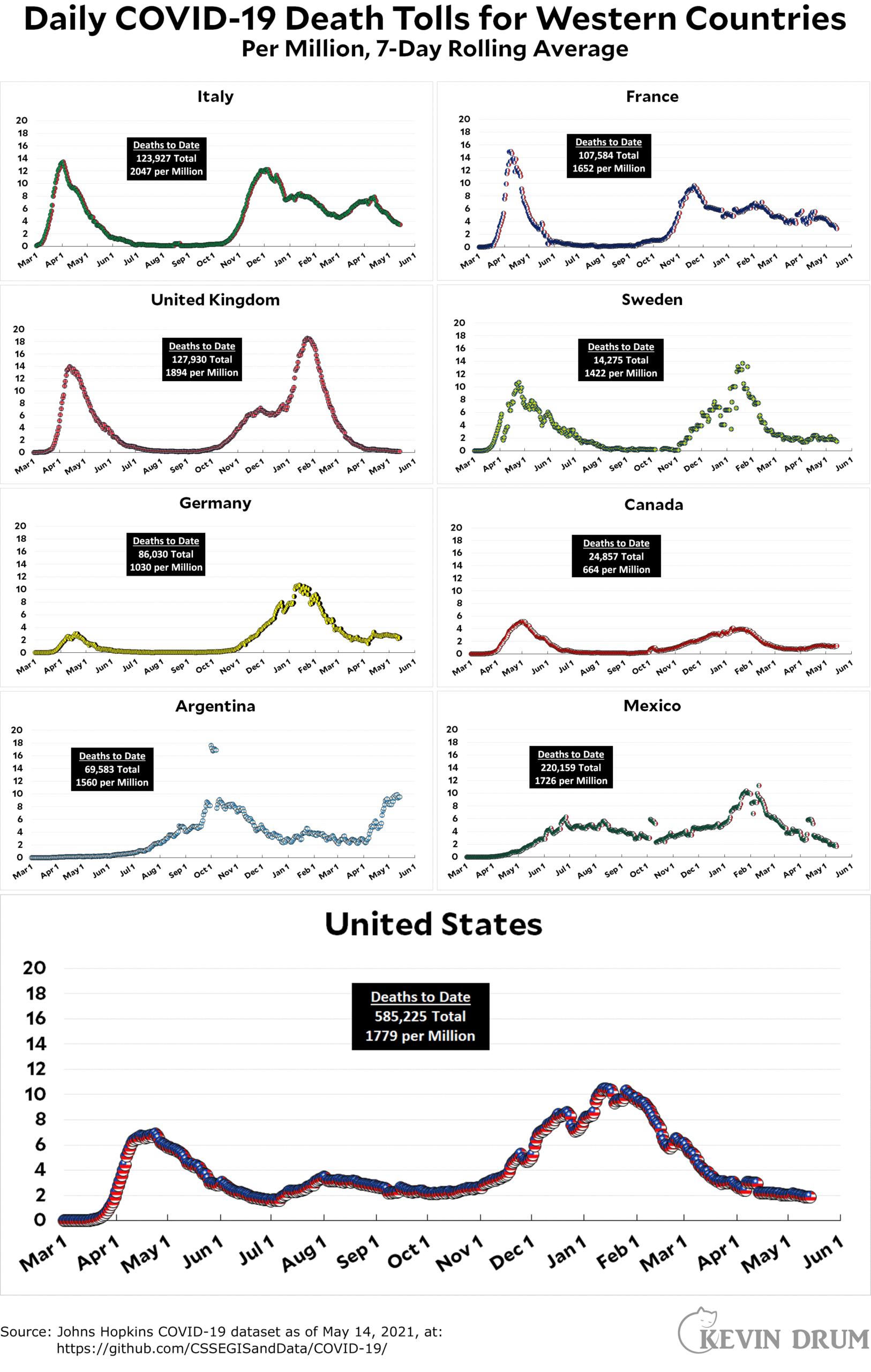
I keep seeing stuff along these lines:
I have to say that my most frustrated and confused friends are the ones who "followed the science" and are now trying to figure out why the science has changed so drastically in the last 2 months
— PoliMath (@politicalmath) May 14, 2021
Am I crazy or is everyone else crazy? Nothing significant has changed about "the science" in the past two months—although we do have more data about how well the COVID vaccines work against all the variants floating around out there. (Pretty well, it seems.) Nobody has said otherwise.
What's changed is the circumstances. No one ever suggested that we'd wear masks forever, which means there was always going to be a day when the CDC would announce that it was OK for vaccinated folks to stop wearing them. That day would come when (a) the case count was dropping, (b) the vaccination rate had gotten sufficiently high, (c) real-world experience with the vaccines was convincingly positive, and (d) other indicators suggested that it was safe to drop the mask recommendation.
This is something of a judgment call, and there's nothing special about the day before or the day after. Nothing "suddenly" changed. Is this really so hard to understand?
Back in the day, this lamp sported an incandescent bulb that provided some lovely warmth for a snoozing cat. We replaced it long ago with an LED bulb, but Hilbert still loves it. Apparently the Pavlovian association of light with warmth continues even years after it's been broken.
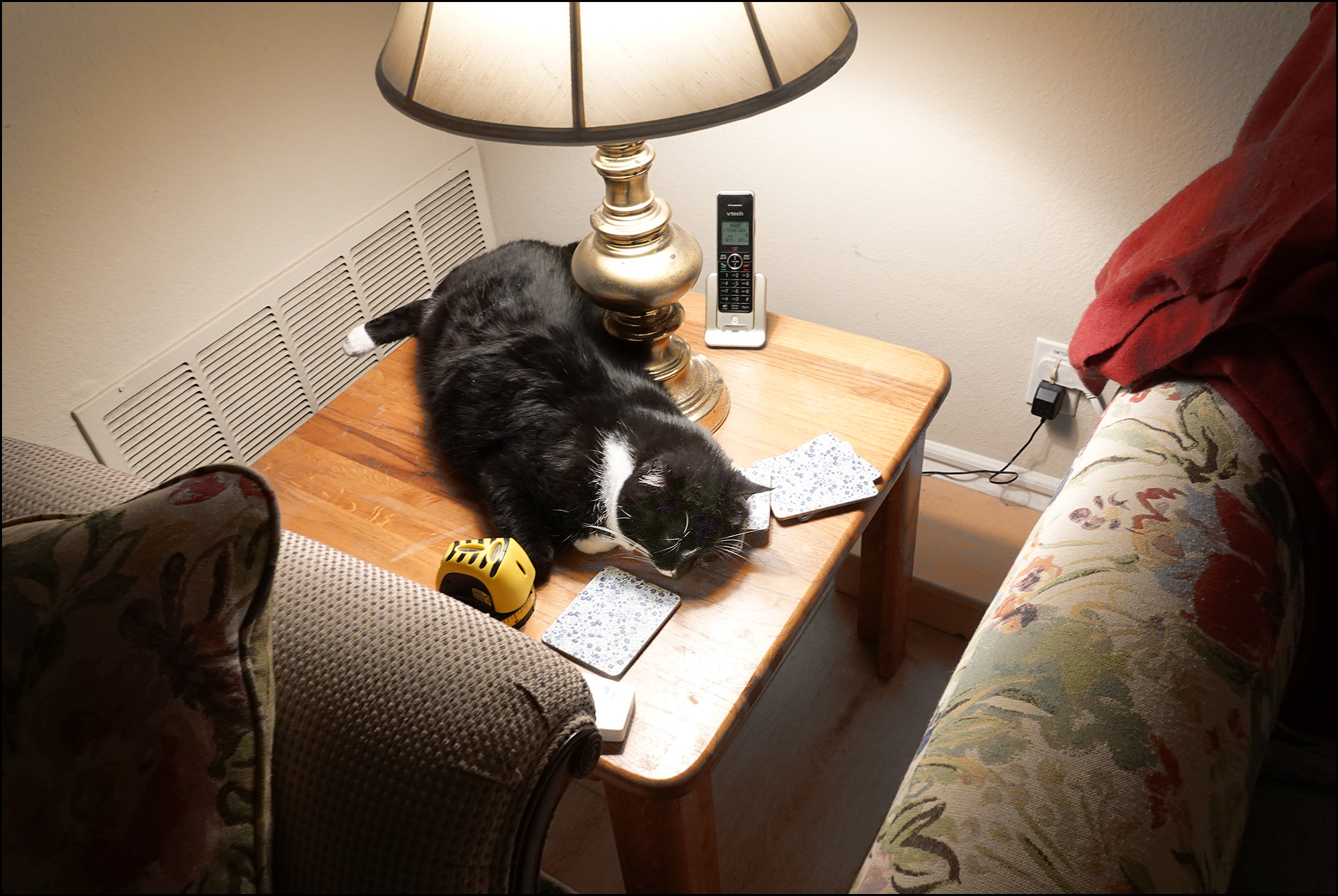
This is apparently the latest progressive answer to every perceived problem with social welfare spending. It is usually proposed with such a palpable sense of self-evident truth that you'd think no one had ever thought of it before.
Just for the record, then: It's been thought of before. Many times. And we already do it with refundable tax credits like the EITC, the CTC, and the ACTC, which collectively amount to $100 billion per year. This makes "just give people money" the second biggest social welfare program in the nation after Medicaid.
Should we just cash out everything else and be done with it? Many conservatives think this is a great idea. And maybe it is. But think hard before you decide to agree with a movement that pretty plainly does not have the best interests of poor people at heart.
NOTE: I've been in a bad mood all week, which probably accounts for the tetchiness of some of my posts. Just being transparent here...
Whenever some kind of disaster hits, there is always somebody who has been warning about it for years. This is because there is always somebody warning about everything. If a giant fireball from space destroyed St. Louis, it would turn out that someone had been warning for years that Midwest cities were vulnerable to mysterious fireballs from space. And reporters would eat it up.
I'm starting to see the same thing with pandemic reporting, and I'd urge everyone to take it with a grain of salt. We're all suckers for stories about heroic but downtrodden scientists who fought the establishment and finally won, but those are easy to write with the benefit of hindsight. Just by chance, someone was bound to be more right and someone else was bound to be more wrong. The question, as always, is whether either side had good reason for its beliefs and whether either has a track record of always being right (or wrong). The problem is that this is usually much more complicated and doesn't always make for a blockbuster story.
With the exception of Michael Lewis, this is not aimed at anyone in particular. Just be careful about this stuff. There are exceptions, but "visionary hero vs. hidebound establishment" happens less often than you might think. That's why the real cases are so famous, after all.
Before Thursday, my Twitter feed was full of people complaining that the CDC was being too conservative about masks and its advice was too complicated. Today, my timeline is full of people complaining that the CDC has moved too fast and is providing advice that doesn't allow any exceptions.
Moral of the story: Everybody hates the CDC. If you were the public face of a pandemic, they'd probably hate you, too.
FRIDAY UPDATE: Oh ffs.

Here’s the officially reported coronavirus death toll through May 13. The raw data from Johns Hopkins is here.
